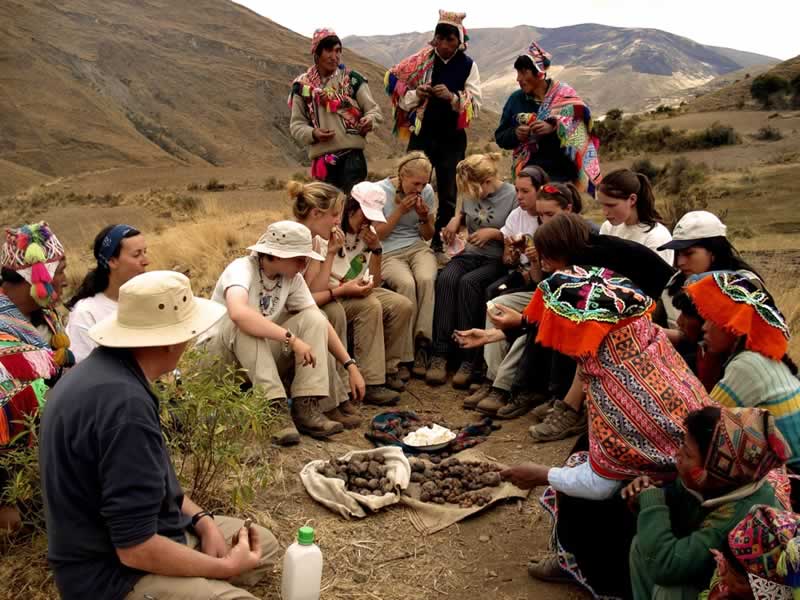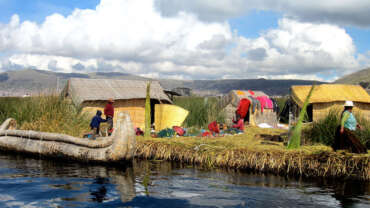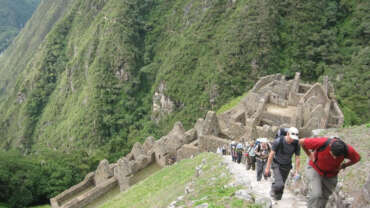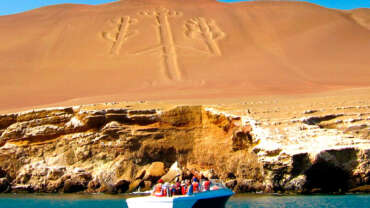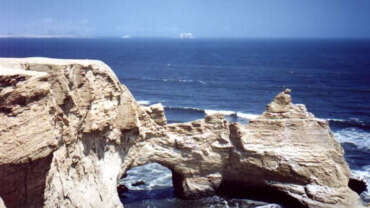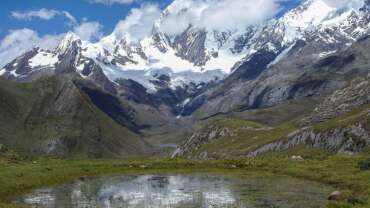Experiences in Peru
Peru has not forgotten its roots. Today, as in the past, Peruvians are proud of their cultural and ethnic identity, and festivals and traditions that are everyday affairs, strengthening personal links, revitalizing great pilgrimages and helping to appreciating nature.
In the department of Ancash, travelers will have the opportunity to search through the past, living out pre-Inca Andean traditions found in the local food, art, communal traditions, music and above all, the return to the use of the llama as a pack animal on a 37 km trek through the Andes. The hike runs through superb mountain landscapes in the Cordillera Blanca mountain range, from the community of Olleros as far as the enigmatic Chavín de Huantar temple.
In the northern highland department of Cajamarca, the inhabitants of the Granja Porcón farm offer an agro-tourist program where visitors can take part in a series of farming activities such as planting and milking cows by hand, live side-by-side with members of the community, giving them a window into their lifestyle, traditions and daily activities. The stay will also enable visitors to take part in festivals and rituals in addition to daily farm chores. It is a unique chance to swap living experiences in a balanced relationship with nature.
Agro-Tourism in Porcón Farm
Rural cooperative offering an agro-tourism program in Cajamarca´s northern highlands, including farming and animal husbandry. These activities include sowing and harvesting potatoes and other roots and garden vegetables, seed selection and soil preparation. It also features cow-milking by hand, selection of breeding stock, visit to a plant nursery and participation in the pine wood rehabilitation and management program, which carries out a very successful project. It is also possible to go on country walks or simply relax and enjoy the peacefulness and tranquility of the beautiful scenery surrounding the community.
Innovative elements
The cultural exchange of living together with members of the community makes it possible to get to know the lifesyle and daily activities of a farm sunrrounded by rehabilitated woodlands, at an altitude of over 3,000 masl.
Participative tourism at Sacred Valley
Three communities of the valley of Urubamba, known as the Sacred Valley of the Incas, have opened their doors to visitors to share their daily lives through participative tourism. Pumahuanca, an agricultural community with a high production of andean crops; Yucay, with its system of inca terraces and an advanced hydraulic technology; and Maras, with a spectacular group of over three thousand evaporating ponds for the extraction of salt. Residents show tourists ancestral techniques, which are still used, being able to participative in agricultural, irrigation and salt-recollection tasks, as well as in Andean festivals and rites. Other outdoor activities include walks through ancient trails, horseback and bicycle riding.
Innovative elements
Residents of three communities have joined forces to form a small business venture, which directly manages this product. With the participation of tourists in the daily tasks carried out at fields, festivals and rites, a real cultural interaction is achieved within a framework of a delicate balance with nature. This experience has made it possible to revalue the valley´s cultural identity.
Heritage trails of Ollantaytambo
The old residential and religious complex known today as Ollantaytambo, considered a living inca town, is the departure point for the seven ancient routes offered by local guides, who recount the myths and legends of a community where time seems to have stopped. Several ecological zones are covered, as well as archaeological sites of great attraction to tourists, such as the Ollantaytambo Fortress, Cachiccata quarries, inca terracing, colcas or food stores and the inca bridge on the way to Pachar. These routes offer a natural environment featuring a breathtaking landscape, passing by Andean communities like Willoc, widely known for its weaving. One also comes in contact with the local culture through handicrafts, typical foods, traditional festivals and Andean rites.
Innovative elements
A micro-enterprise formed by local inhabitants and guides, adequately trained and who express in their tales an original and different concept of the history, culture and landscape of Ollantaytambo.



